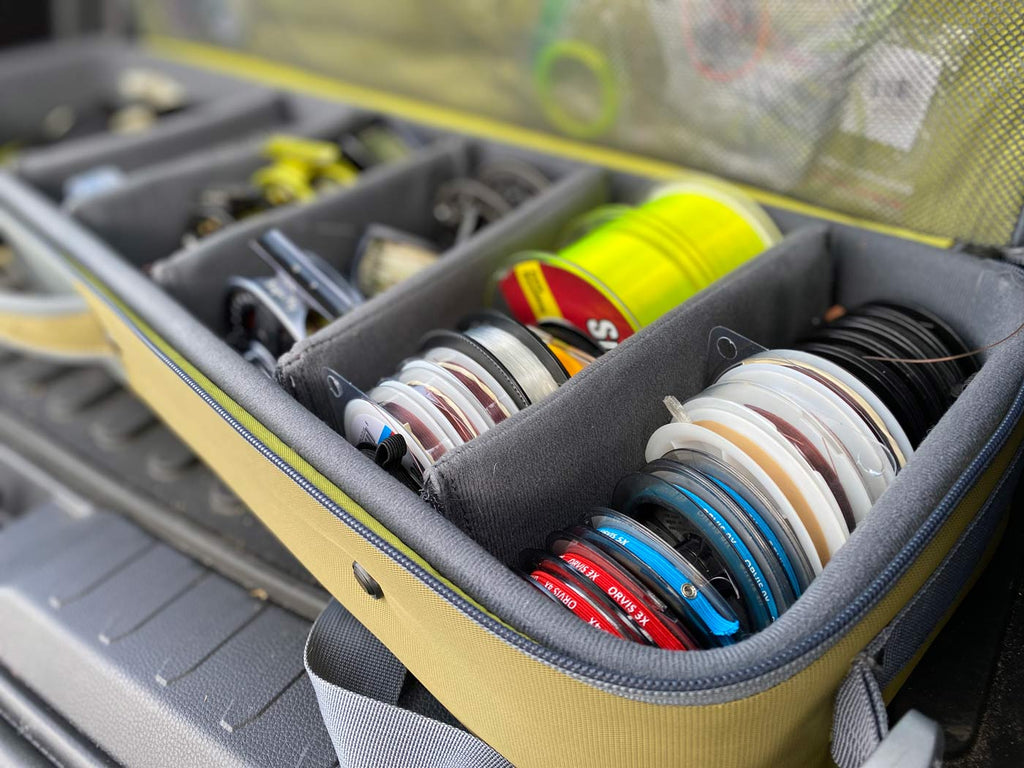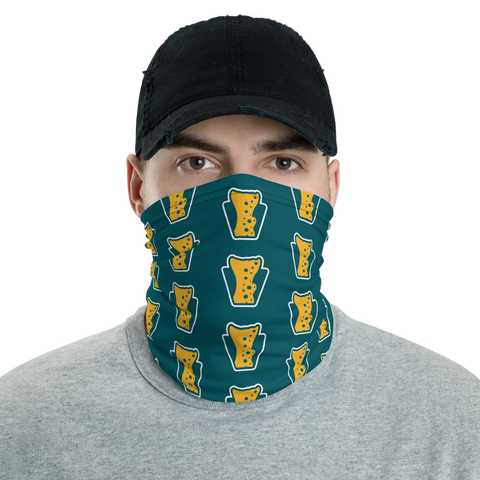
Light Euro-Nymphing - Part 3: The Leader
Euro-Nymphing: Fish lighter to improve your nymph game
Part 3: The Leader.
This is a series of articles to help you fish lighter for improved euro-nymphing success.
I've seen a lot of folks that think you just tie on some maxima and a sighter to your fly line and cast some bugs. However, leaders are EXTREMELY important for casting your nymphs.
While tight lining, you should work towards the following qualities of a leader:
- Lightness
- As little sag as possible
- Small knots
- Turnover potential
- Taper
- Maximum sensitivity
- Cast-ability
To achieve these, we use the same theory as flies, thin & light. Less bulk on a leader will mean less sag, lightness, and maximum sensitivity. Smaller knots will also equate to a lighter leader.
While you may find most of those aforementioned conditions being met with a specific leader, cast-ability should be the deciding factor on whether or not to continue using that leader. I've iterated over many leaders that checked most boxes, but they either weren't accurate enough, or didn't turn over properly when casted. It is frustrating, but the beauty of fishing is, you can either change up leader configurations on-stream with little material, or change it for the next outing. Taking the time to tweak your leader, you will find, will pay off when you find the right fit.
For competition purposes, I am always fishing a thin nymph fly line. It is important that your nymph line not be a part of your leader, and still act as a fly line for casting. If you purchase new nymph line, and it has a loop on the end, cut it off. Loops are pretty terrible at sliding through guides.
A rule of thumb I use for leader length, with tippet included (4-6') is to keep it 2x the length of your rod. So, if you're fishing a 10' rod, make your leader 14-15' with room for tippet. I wouldn't go any shorter, as the more fly line that is being actively used in your drift will create unnecessary sag.
I will caution you, as light leaders are pretty weird and/or uncomfortable to fish at first, and you might want to overpower your rod for a better outcome. You may also find it hard to stay accurate at first. Start close to you and work your way further out to get used to it. With the proper casting stroke, you will find you don't need to overpower your rod.
My general purpose recipe is (thanks to Chase Kreider) the following:
- .022 Level Cortland Competition Nymph Line (mono core)
- Why Mono-core? Check out Josh Miller's Video
- Stripped fly line to expose mono core
- 6' #12 Cortland Euro-Nymph Leader Material or Maxima blood knotted to exposed mono
- 4' #10 Cortland Euro-Nymph Leader Material or Maxima
- 3' .009" Cortland White Sighter Material
- 2' .008" Cortland bi-color Sighter Material
- Tippet Ring
The key to leaders turning over is not just a nice taper, but a difference in material stiffness. Cortland Euro Nymph Material is stiff, while the Cortland Sighter is more supple. The transfer of energy while fishing light flies carries over easier with this changing of material, we can call this point a "hinge point". It is important to have your leaders turn over effectively, else your flies won't enter the water properly.
The leader above works with success on all rods I nymph with. However, fishing heavy, bulkier flies seems to slightly disrupt accuracy.
If you're not getting proper turnover on your leader, it may be not suited for your rod or casting stroke. Every one has a different stroke. As I've mentioned before, leaders are certainly not one-sized fits all thing. When tweaking my configuration I look at the following, in this order:
- Poundage and taper.
- Am I tapering enough?
- Lack of taper, depending on your casting stroke, may not be enough to transfer the energy of your leader to turn over the flies.
- Am I tapering too much?
- Tapering too much may result in an overcompensation of energy transfer, which could hinder your flies turning over... or it could work for you.
- Do I need a taper? I've also had success with a straight #10 section of butt section to my sighter.
- Try not to go above #15 on any part of your leader if you're having trouble.
- Length of sections
- Adjusting the length of your sections will disperse the energy transfer throughout the leader.
- For example, shortening your sighter will provide hinge point that is shorter and will probably turn over later in the cast than a longer sighter. This may be ideal for your casting stroke.
- Materials
- You may need to change the materials of your butt section or sighter, if it is not stiff or supple enough to properly cast.
I wont leave out, if you're fishing a mono-rig, just tie the light leader on to the end of your long butt section.
Things I don't look for in a leader, and why, are as follows:
- Furled leaders - too heavy, not as sensitive
- Multiple tippet rings - again, too heavy
- Useless knots or tags - whiskers were popular a while back... but they really effect your cast and weight
- Barrels or other fixed knots comprised of non-leader material - too heavy
- Backing as part of the leader - cast-ability
I'll also add, if you have trouble seeing your sighter in any light condition, try some of these:
- This crazy awesome wax... it is basically like a lightbulb
- Grease your sighter with Loon Payette Paste or Mucilin, I've noticed this increases visibility
- Multi-tone sighters with lights and darks
I'll note that outside of fishing, store your leader material in a cool, dark place, away from direct UV light. Sun is bad for mono or nylon over a prolonged period of time, and can ruin a spool of material before you know it.
Please feel free to share your favorite light leader recipes or questions in the comments below.
Next, we'll talk about Tippet.
- Nick Meloy



Tim Presicci
Thank you for your posts on fish lighter, such a great series. Totally confirms my suspicion to lighten up…